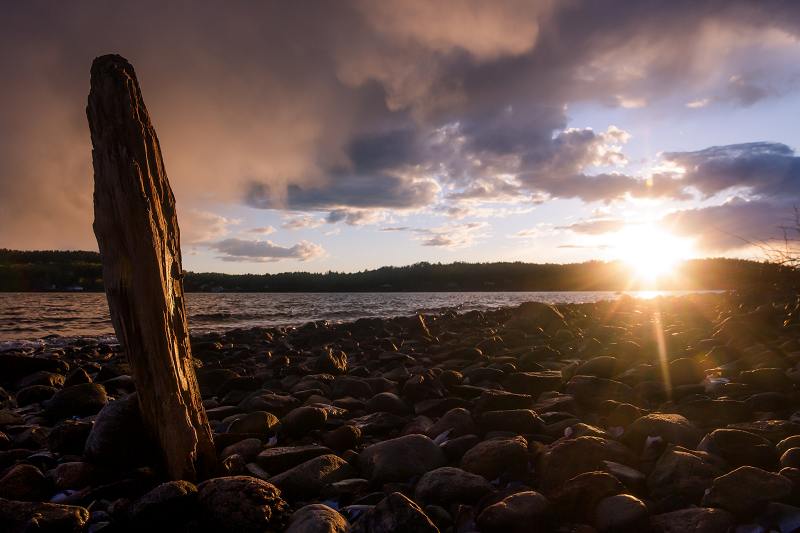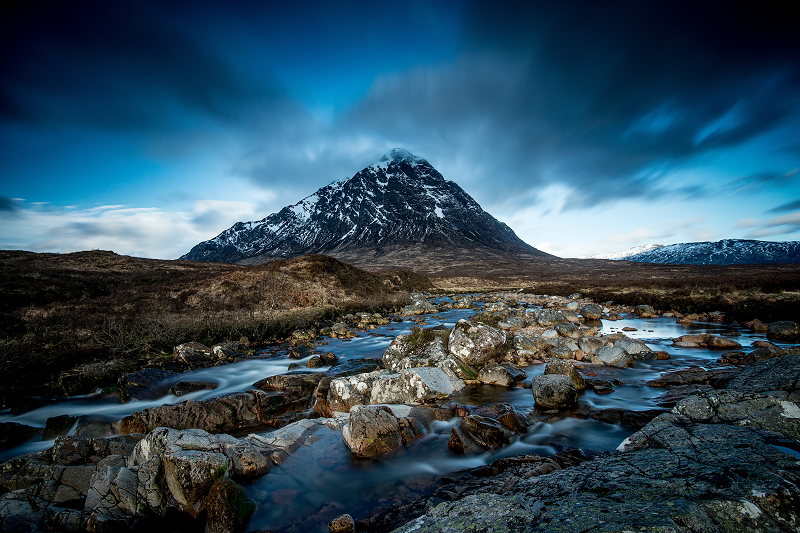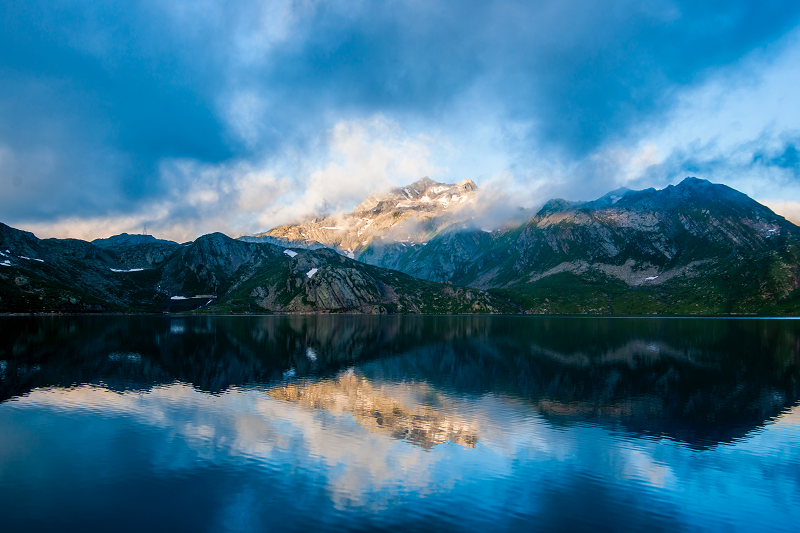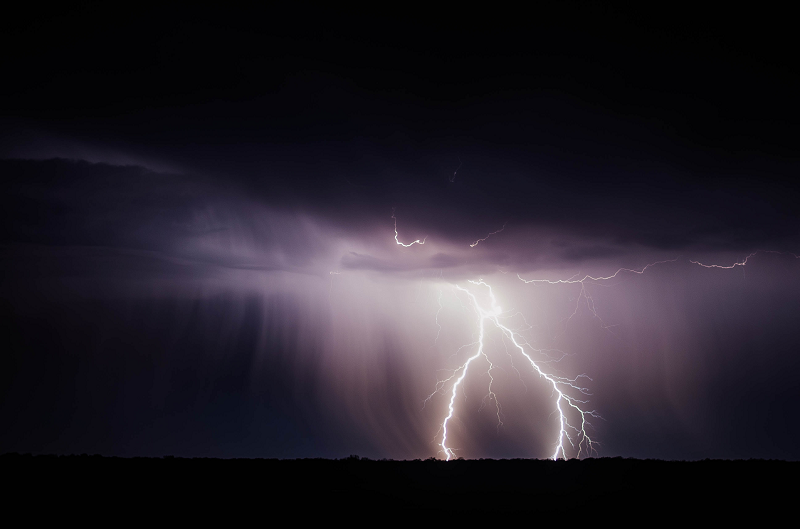
photo by: Vegar Samestad Hansen
While many people prefer to shoot when the weather’s pleasant and the skies are blue, experienced landscape photographers know that storms can present the perfect opportunity to capture some dramatic and powerful images!
As the old saying goes, “Bad weather makes for good photography.” And storms often create spectacular conditions to photograph. From eye-catching bolts of lightning to fierce and looming clouds, to dramatic light as the sun breaks through the clouds, there are plenty of exciting moments during a storm, just waiting to be captured.
Working in stormy conditions can be a bit of a challenge, but with practice and hard work you’ll soon be rewarded with unique and exciting images –ones that stand in contrast to everyday photos, and showcase the world in a completely different light.
If you’d like to get started with storm photography, here’s a look at a few tips for capturing amazing images during tempestuous weather!

photo by: oldskool photography
Watch for the Storms
While storms can arise seemingly out of nowhere, tracking a storm can help you better prepare for your shoot. So be sure to get ahold of a good weather app, like WeatherPro (iPhone or Android), and use it to keep up-to-date on impending storms. Knowing the conditions –rain, snow, high winds –and how powerful it will be can help you be prepared and safe while out shooting.
Scout Out a Location
Location is everything! First, you’ll want to determine which direction the storm is coming in from. You’ll then want to find a location that will allow you to capture it from the perfect angle. This will depend largely upon the type of storm, and your photography goals. A high vantage point that offers a good view of the incoming storm is ideal for capturing images of storm clouds. Or, you could head to the coast to photograph the waves crashing onto the shore. A grassy field, billowing in the wind, engulfed by looming storm clouds could also make for some exciting images. Think about the type of images that you’d like to capture when scouting out your location.

photo by: Johannes Plenio
Bring the Right Gear
Storm photography is a bit different from other types of landscape photography, and you’ll want to bring along a few extra pieces of gear to help you capture your shots. Here’s a look at a few things you’ll want to consider bringing:
• Lens
Which lens should you bring? If you have a wide-angle, you’ll definitely want to bring it along to help you capture sweeping landscapes that feature storms in all of their beauty. Of course, if you have a zoom lens, you could bring that as well –sometimes zooming in on certain aspects of the storm can make for some great images as well.
• Tripod
This is especially important if you hope to capture lightning –and are looking to use long exposures. If you’re serious about storm photography, you’ll want to consider getting ahold of a sturdy tripod as a more flimsy design will be blown over easily in the wind.
• Weight Bag
Because of the unpredictable weather during storms, you may find a weight bag or sandbag to be useful for keeping your tripod steady and secure.
• Remote Shutter Release Cable
A remote shutter release cable is also a good idea. It will help to reduce camera shake and give you the clearest image possible.
• A Rain Cover
A rain cover for your camera is also important. You don’t need anything too fancy, just something to keep the rain off your camera. You may also want to bring a towel for drying things off, and a microfiber cloth for wiping your lens. Be sure to bring a warm rain jacket for yourself as well!

photo by: Karsten Würth
Remember Your Composition
It can be easy to get caught up in the excitement of the storm and neglect the composition itself. Don’t make this mistake! Take a few seconds to think about the composition, in order to capture that perfect shot.

photo by: Alberto Restifo
• Look to Capture the Light
The lighting during a storm can be spectacular, especially in the early moments while the storm is brewing on the horizon. Another ideal time for dramatic lighting is later on, immediately after the storm has ended. You’ll be in for an amazing light show as the sun breaks through the clouds! This is also an ideal time to capture rainbows, so be on the lookout for some amazing sights as the storm rolls out.
• Find a Focal Point
Finding a point to focus on can create a more engaging shot, and help to anchor your image. Look for something interesting to use as your focal point, whether that’s a lone tree or rock formation in the foreground, or a looming mountain in the distance.
• Watch the Horizon
If you have dramatic, ominous storm clouds that you’d like to feature in your image, be sure to compose your shot so the horizon’s closer to the bottom of your image –allowing the sky to take up a significant portion of your composition. On the other hand, positioning the horizon a bit higher is ideal you’re looking to incorporate some interesting foreground into your image –especially if you’re using a wide-angle lens.

photo by: Brandon Morgan
Lightning can make for some strikingly beautiful images! To capture lightning at night, you’ll want to use a tripod and a slow shutter speed –usually around 30 seconds or so. Adjust your aperture to around f/8 and try to keep your ISO below 400. Take a few test shots and check the results. If you find that the image is too dark, consider slowing the shutter speed down just a bit. You’ll also want to use manual focus when capturing lightnin, since your camera’s autofocus will have a hard time focusing on the streaks of light. If you can, try to find a distant point of light to focus on –like the lights of the city, for sharpest results.
Consider Making a Few Adjustments in Post Processing
If you have a program like Lightroom, consider post-processing your best storm images to enhance them just a bit. The focal points –and areas where the light is breaking through the clouds or places that are receiving direct light can sometimes stand to have the saturation enhanced slightly. Or, if you’re out taking images and find that the foreground and background require different exposures, consider taking multiple shots –exposing for the foreground and the background. You can then combine the images into one composite image later one.
Safety First
Finally, it’s important to stay safe when you’re out shooting a storm. Storms can be powerful and often dangerous; especially when lightning is concerned, so be prepared before you go, and be aware of your surroundings when you’re out. While it can be difficult to gauge distance at night, try to stay at least five to ten miles away from lightning if you can. Avoid putting yourself in compromising positions –remember: no photograph is worth the risk of serious injury.
While clear skies are nice, there’s something special about being able to capture images of storms. From sweeping landscapes that showcase the storm in all of its fury, to more close-up images that highlight the effects of the storm –there’s a lot to capture when the skies turn gray. Instead of packing up when bad weather’s on the way, why not give storm photography a try? Have fun creating images that are daring, exciting, and truly unique –ones that stand out from the crowd.
Do you enjoy storm photography? Share your best storm photography tip with us!